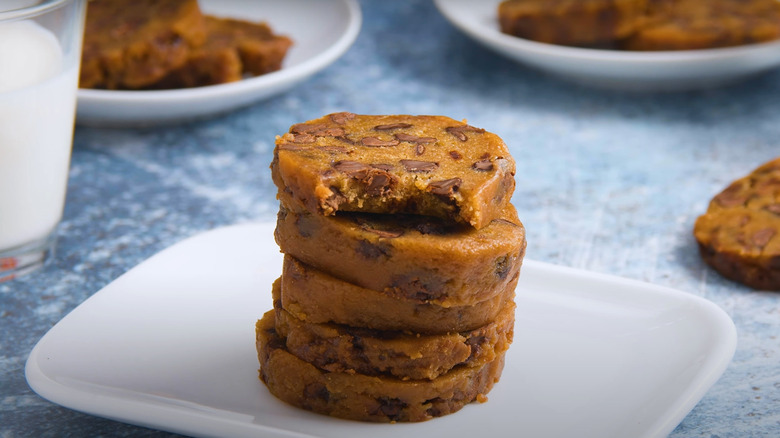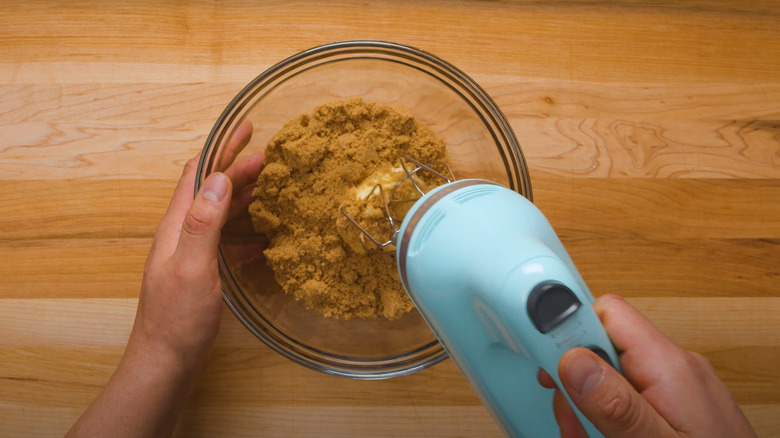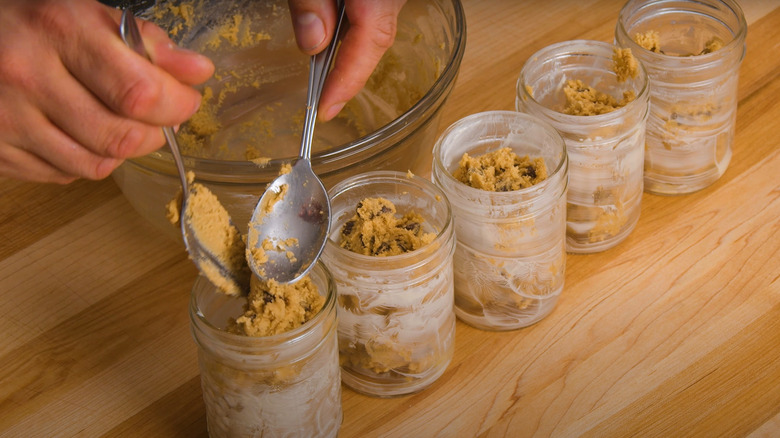Sous Vide Your Cookies For The Softest Possible Results
There's certainly nothing wrong with classic oven-baked cookies. However, sometimes a little baking experiment can yield fantastic results. The sous vide is one such alternative approach that tends to produce the softest and most delicate treats.
Sous vide, French for "under vacuum," refers to a cooking technique that originated in France in the 1970s. To sous vide cookies, seal your batter in kitchen-safe containers, which are then immersed in a water bath. The water is heated to precise temperatures, gently cooking the batter to perfection.
You can sous vide with an immersion circulator or a water bath. Both approaches require the same key technique: cooking food at the same low, precisely controlled temperature from start to finish. Most sous vide cookie recipes use low temperatures of about 195 degrees Fahrenheit for the water bath, and a baking time of up to three hours! Cookies do particularly well when baked with the sous vide technique, because it helps the batter retain moisture and chewiness.
Provided you have the time, the sous vide approach is your best bet if you find oven baking tricky in terms of avoiding burning, uneven cooking, and moisture loss. By immersing your batter in a water bath at a consistent temperature, you can evenly bake each side of the cookie (unlike an oven, which often cooks one side faster). An air- and temperature-controlled environment also allows the cookie dough to steam in its own moisture, meaning you won't risk a dry or brittle batch.
Adjusting your cookie dough for the sous vide technique
To flawlessly sous vide cookies, you can use a traditional cookie dough recipe, but with a few key adjustments. Use less butter than traditional batter requires because too much can result in a mushy batch. Remember, the sous vide technique uses lower temperatures, a sealed cooking environment, and less airflow than an oven, meaning excess moisture can't escape the dough.
This results in a deliciously soft and moist, bakery-level cookie, but too much fat concentrated in the dough can leave you with a soggy cookie that doesn't hold its shape. For example, a sous vide recipe for 24 cookies might use three ounces of butter, while an oven-baked recipe for the same yield could use up to eight ounces.
Add a bit more flour and baking powder to your dough to counteract the negative effects of low-heat baking, which makes it harder for dough to firm up and rise. Adding more flour and baking powder will help your cookies retain their structure and have a chewy, rather than soggy, texture once you remove them from the water.
Using the right container to sous vide cookies
A deliciously pillowy bite is all very well, but that classic round and chunky shape is part of what makes cookies so beloved. How can you use the sous vide technique and still serve cookies that look like, well, cookies?
While many sous vide recipes suggest using a vacuum-sealed pouch for cooking, you can also use alternative containers in a water bath to shape your dough as desired. Half-pint canning jars are a good option because they have a circular shape, are easy to grease internally for easy cookie removal after baking, and have secure lids that prevent water leakage.
Thoroughly grease the inside of your containers with butter or cooking oil, and fill the jars about halfway with dough, leaving enough room for it to rise. Make sure you don't screw the lids on your jars too tightly, as some air will need to escape when the cookies expand during the baking process.
You can submerge your containers up to the lid line to ensure air can escape without water seeping in. After baking, once your batch has cooled for five minutes, simply slide the contents of each container onto a clean surface and slice the baked cylinder into rounds.



